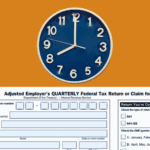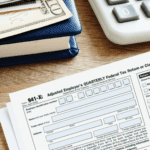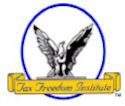2012 has proven to be a tumultuous year when it comes to taxes. While there have been many changes during 2012, most were overshadowed by the flurry of changes prompted by the fiscal cliff crisis. Overall, the majority of 2012’s tax changes were aimed at higher income groups while bringing some measure of relief to low and middle income earners.
Assessing the Impact of the Fiscal Cliff
Although the fiscal cliff crisis was amicably resolved by Congress in early 2013, the effects of legislation will continue to reverberate throughout 2013. Taxpayers with incomes over $400,000 took the brunt of the impact stemming from the fiscal cliff crisis, as their tax rates went up to 39.6 percent. Other last-minute tax changes also had a sizable impact on taxpayers in lower income brackets.
Another major impact of the fiscal cliff felt by almost all taxpayers was the resultant delay of tax return filing for 2013. As the IRS worked to implement changes in their computer systems to properly reflect late changes in the tax code, taxpayers saw the start of tax return processing pushed back from January 22 to January 30. From a taxation perspective, the following changes go a ways to relieve pressure from lower income brackets while encouraging higher incomes to pay their fair share.
Major Tax Changes During 2012
- Increase in Maximum Marginal Tax Rate – The maximum federal income tax rate was raised from 35 percent to 39.6 percent. Capital gains taxes on long-term investments also rose from 15 percent to 20 percent. Qualified dividends, once taxed at the same rate as long-term capital gains, were also increased at the end of 2012. Qualified dividends are now treated as other ordinary income and taxed at the maximum income rate of 39.6 percent.
- Expiration of Payroll Tax Cuts – In 2010, Congress passed a reduction in payroll taxes as a temporary measure to jump-start the economy, lowering payroll taxes from 6.2 percent to 4.2 percent. As a consequence of the fiscal cliff, Congress allowed that reduction to expire, causing the payroll tax to revert to its original rate.
- Alternative Minimum Tax Patch – At the end of 2012, the Alternative Minimum Tax was permanently indexed to inflation, reducing the number of people who would normally become subject to the tax as their incomes grew.
- 10-Percent Tax Bracket Extension – At the end of 2012, the lowest marginal tax rate would have increased from 10 percent to 15 percent. As a result of legislation stemming from the fiscal cliff crisis, the 10-percent tax bracket was extended for taxable years beyond 2012.
- Changes in Standard Deductions – Those filing as “Single” and “Married Filing Separately” received a $150 increase in their standard deduction amounts. Those filing as “Head of Household” received an increase of $200 while joint tax filers and widows received a $300 increase.
- Increases in Retirement Account Contributions – Contribution limits for 401(k) and 403(b) plans rose by $500, with catch-up contributions remaining at current levels. Roth IRA income phase-out thresholds rose to $173,000 for joint filers and $110,000 for single and “Head of Household” filers.
- Vehicle Mileage Deductions – Mileage reimbursement rates for business travel rose to 55.5 cents per mile. Starting in 2013, mileage rates will increase an extra cent for business travel and medical/moving travel.
- Medicare Tax on Investment Income – Starting in 2013, taxpayers who earn income from investments, including interest, dividends and royalties, are now subject to a 3.8-percent Medicare tax. The rate will be applied to the lesser of a taxpayer’s net investment income or the excess of their modified adjusted gross income. This tax comes as part of the tax changes precipitated by the fiscal cliff crisis.






 Steven N. Klitzner, P.A. is a tax attorney based in Miami, Florida. He has been practicing tax law for over 40 years, and currently holds a 10.0 rating by Avvo. Mr. Klitzner was appointed to the IRS Service Advisory Council in 2021 and is...
Steven N. Klitzner, P.A. is a tax attorney based in Miami, Florida. He has been practicing tax law for over 40 years, and currently holds a 10.0 rating by Avvo. Mr. Klitzner was appointed to the IRS Service Advisory Council in 2021 and is... 





